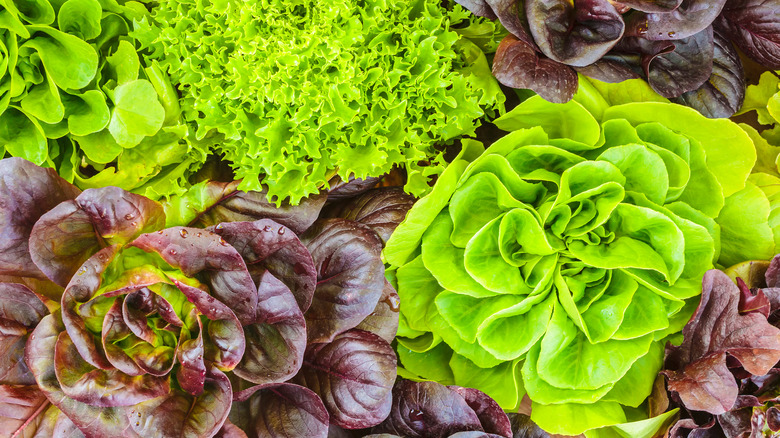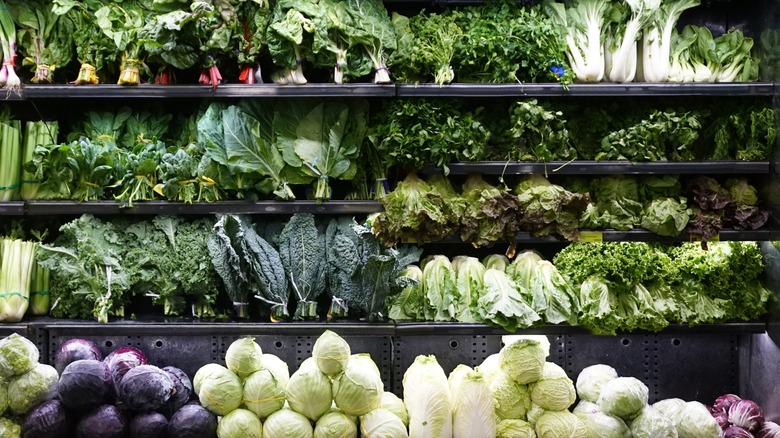The Simple Reason Some Lettuce Varieties Don't Stay As Fresh As Others
Sometimes your fridge's crisper drawer seems to have the opposite effect of its intended purpose. That bag of fresh butter lettuce you brought home from the store went from pristine green to spotted brown seemingly overnight. It's not your fridge nor the drawer. Some lettuce varieties are simply more fragile and go from vibrant and blemish-free to weak and wilted much faster than others. It all comes down to the robustness and hardiness of the given leafy green.
Lettuces have a high water content and once harvested their hydration supply is cut. As they start to age after they've been picked, their cells lose water and shrink, resulting in droopy, wilted leaves. Head lettuces with part of the root still attached, such as iceberg, romaine, and red and green leaf will last the longest. Hearty greens like arugula, endive, and spinach will last longer than delicate loose leaf lettuces or Bibb and Boston varieties. While perfectly safe to eat, wilted lettuce isn't exactly appetizing. Whatever variety you purchase, proper storage can help maximize its shelf-life and get you the most bang for your buck.
How to maximize the shelf-life of lettuce
There is a fine line between too little water and too much when it comes to lettuce. For this reason, it's best to store your greens unwashed. Too much water on the leaves during the storage process will result in slimy, rotting leaves. However, lettuces need moisture to stay fresh. It's best to store them in an airtight container, such as a sealable plastic bag, to minimize exposure to air and subsequent water loss from the cells of the greens. The function of your refrigerator's crisper drawer is to regulate airflow and allow for higher humidity which will keep lettuce fresher and crisper longer.
At the store pick the freshest lettuce possible, usually stocked at the back of the rack. Opting for recyclable plastic clamshells will also help protect your greens from bruising and damage. Keep in mind the type of lettuce you're dealing with and its level of hardiness, then consume accordingly throughout the week. If you missed the crisp window on any lettuce hanging out in your fridge, there's no need for it to go to waste. Add it to a soup, whip up a pesto, or sauté them up for some added greens in your frittata or pasta sauce.

